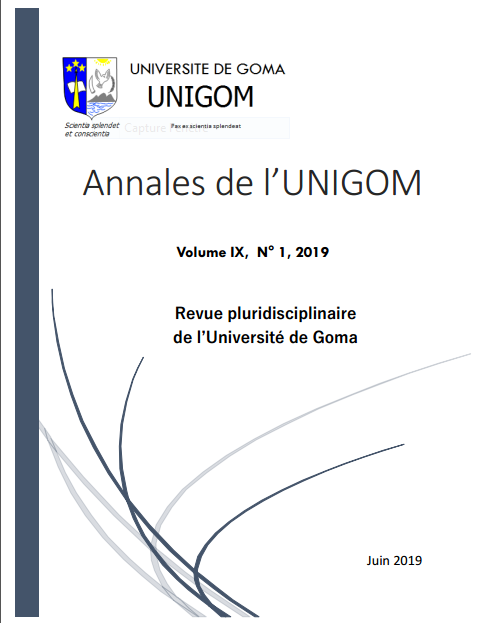Substitution de la farine de sorgho par la levure Saccharomyces cerevisiae dans la fabrication du vin de banane artisanal « Kasiksi » en RD Congo
Contenu principal de l'article
Résumé
Résumé
Cette étude a porté sur l’effet de la levure Saccharomyces cerevisiae dans la fabrication du vin de banane « Kasiksi ». Son objectif principal est d’améliorer ledit vin grâce à l’action d’une levure sélectionnée. L’expérimentation a consisté en la substitution partielle et totale de la farine de sorgho par la levure S. cerevisiae et les différents vins obtenus ont été comparés en fonction de leurs caractéristiques sensorielles (piquant, sucré et clarté), physico-chimiques (pH, densité, degré Brix, degré alcoolique, acidité citrique, acidité acétique et acidité tartrique) et microbiologiques (flore aérobie mésophile totale et flore indicatrice de contamination fécale).
La levure S.cerevisiae a amélioré les qualités physico chimiques et microbiologiques du vin en augmentant sa teneur en alcool (de 4,9 à 9,74V/V) rendant le milieu défavorable à la croissance d’un nombre important de microorganismes. Il s’est remarqué que du point de vue organoleptique, même si les vins concernés ont été approuvés et appréciés par les différents dégustateurs, la substitution partielle de la farine de sorgho par S. cerevisiae s’est avéré intéressante pour préserver l’originalité sensorielle du vin de banane Kasiksi.
Abstract
This study has investigated the effect of the yeast Saccharomyces cerevisiae in the production of banana wine “Kasiksi”. Its main purpose is to improve the aforesaid wine through the action of selected yeast. The experiment consisted in the partial and total substitution of the sorghum flour by the yeast S.Cerevisiae and the different wines obtained were compared according to their sensory characteristics (piquant, sweet and clear), physicochemical (pH, density, Brix degree, alcoholic degree, citric acidity, acetic acidity and tartaric acidity) and microbiological characteristics (aerobic total mesophilic flora and indicator flora for faecal contamination).The yeast S. cerevisiae has improved the physicochemical and microbiological qualities of the wine by increasing its alcohol content (from 4.9 to 9.74V / V) making the environment unfavorable to the growth of a large number of microorganisms. It has been noticed that from an organoleptic point of view, even though the wines concerned were approved and appreciated by the different tasters, the partial substitution of sorghum flour by S. cerevisiae proved to be interesting to preserve sensory originality of ‘‘Kasiksi’’ banana wine.
